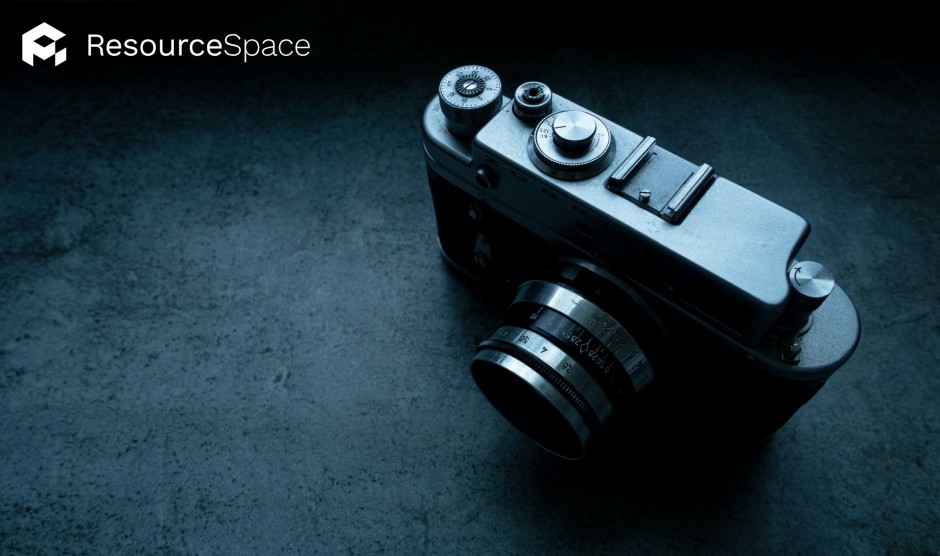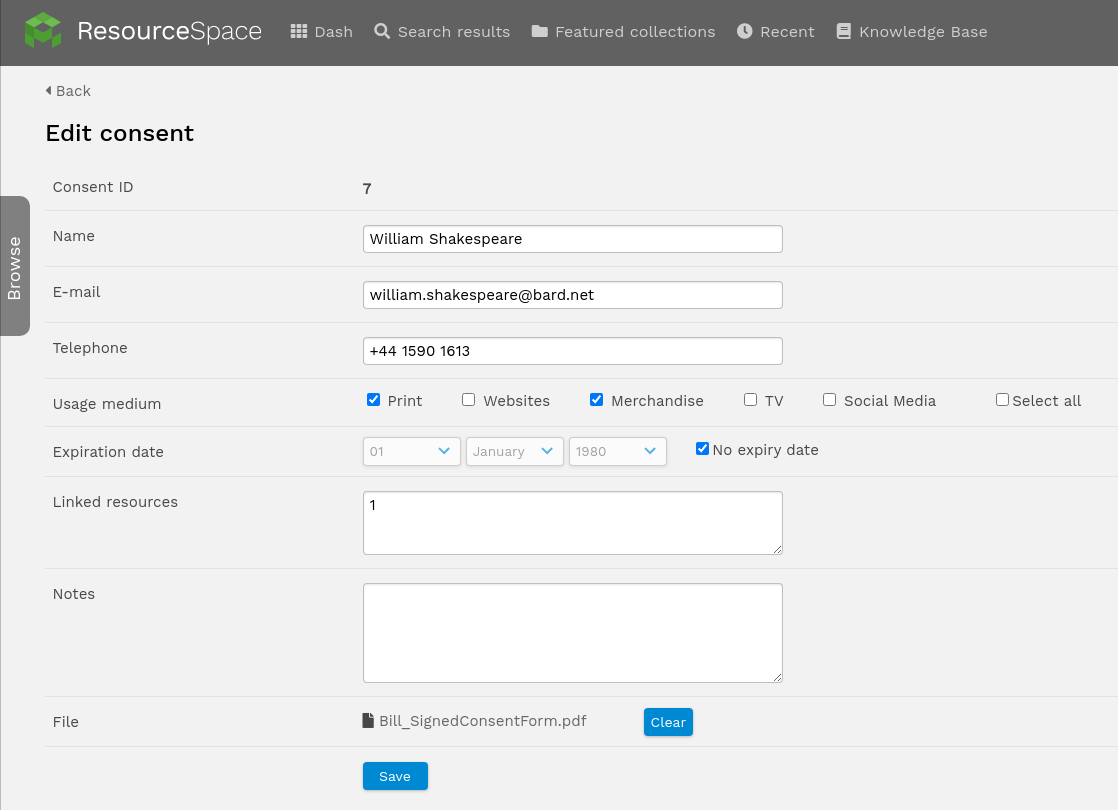
ResourceSpace has changed the way the DEC uses content, making it much easier for us to quickly make assets available both internally and externally during our emergency appeals.
Blog
8th July 2025

Is your organisation creating content to promote yourselves across multiple media platforms? If you’re a DAM Manager, Rights Manager or Marketing Manager you’ve probably experienced some challenges managing copyright and consent.
In this article we’re going to look at why staying on top of usage rights is getting harder, the risks you need to be aware of and how a Digital Asset Management (DAM) system can help.
Managing copyright across media platforms is becoming increasingly difficult for organisations of all sizes and across multiple industries.
As the demand for fresh content grows, marketing teams are expected to create, publish and share more assets, more quickly, across a wide range of channels. This makes keeping track of copyright ownership and usage rights very difficult.
One major challenge is the increased use of freelance content creators, particularly since remote work generally has become more common. While freelancers offer flexibility and creativity that your internal team might lack, they also bring complexity when it comes to rights management. Copyright agreements can vary from project to project, and without clear records it’s easy to lose track of who owns what—or what permission has been given for how and where assets can be used.
Another trend is that many organisations now operate with teams spread across multiple locations, sometimes in different countries. When assets are being used, edited and shared across time zones and departments, the risk of copyright infringement increases. Without a central system to track rights and restrictions, there’s a greater chance that content will be used incorrectly or published in a way that breaches the license agreement.
Finally, marketing teams are under pressure to produce more content than ever, faster than ever, and for an increasing number of digital channels. Unfortunately, speed is often prioritised over robust processes, with appropriate copyright checks given less attention or skipped altogether.
Let’s look at three common risks that media teams need to be aware of:
Without clear information about how an asset can be used, marketing and sales teams may unknowingly breach copyright or licensing agreements—something that can lead to legal action, fines or the need to remove content already in use.
Poor or absent documentation of usage rights is especially common when assets have been created by freelancers, agencies or external partners—and this makes it difficult to know whether content can be reused, edited or published on certain platforms.
Even internal teams may lose track of usage rights if there isn’t a dedicated Digital Asset Management system in place. An image that was licensed for one campaign may end up being used for a different project outside of what was originally agreed.
As we’ve touched on above, reusing licensed content without checking the usage terms can lead to serious copyright issues.
Just because an asset has been used before doesn’t mean it can be used again in a new campaign, channel or format. Licensing agreements often come with limits, such as where and for how long content can be used, or whether it can be edited.
If these terms aren’t documented or there aren’t processes in place to ensure they’re checked ahead of using assets as part of a campaign or project, organisations risk breaching licences on a regular basis. That can result in takedown requests, legal action or fines, especially if the content is published widely or used commercially without the correct permissions. In some cases, it can also damage relationships with creators or licensors.
The risk is particularly high when digital assets are stored in shared folders or passed between teams without clear documentation. One person might assume content is safe to use simply because it already exists in the DAM, not realising the original terms have expired or were limited to a specific use.
Not having a centralised access point or audit trail for digital assets creates a number of risks, especially when it comes to copyright, usage rights and content control. Without a single source of truth, assets are often stored in multiple locations, for example shared drives, desktops and email threads, and this makes it difficult to know which version is the most up to date, who last used it, or whether it’s still approved for use.
This lack of visibility increases the chances of using out-of-date or unlicensed content, as there’s no clear record of where the asset came from or how it was used previously. If an issue arises, such as a licensing dispute or a takedown request, it can be hard to prove compliance either way.
This also makes collaboration harder, as teams may duplicate work or waste time searching for files that already exist. Worse still, content might be edited, reused or shared without any checks because there’s no system in place to monitor activity.
Managing copyright and usage has always been difficult, but it’s now harder than ever. Fortunately, ResourceSpace is a DAM system that excels at dramatically reducing the risk of misusing assets and breaching licence terms.
ResourceSpace boasts a range of features that supports consent management, while all consent records can also be reviewed and edited centrally by the DAM Manager.
The Consent Manager plugin also allows you to manage consent directly within the resource view page itself, providing a central consent management area for you to specify where an asset can be used, set an expiry date (at which point the asset will no longer be available to other DAM users), link multiple resources and add notes for more context.

Workflow states enable DAM Managers to monitor the status of all the resources within ResourceSpace, while access can be determined according to whether an asset is live or archived.
These comprehensive workflows ensure only approved assets go live on the DAM, while actions can be set based on each stage of the workflow.
This granular level of control makes it much easier to avoid out of date resources being used, or published in the wrong place.
The biggest risk to copyright is when an organisation loses control over its assets. This is often because it doesn’t have a centralised system for storing them, but it can also be because everyone has access to view, edit and share them.
This leads to assets being stored across multiple locations, as well as shared and published to different mediums without the proper checks and processes. Subsequently, when the license on a particular resource has expired, it’s hard to track down and remove from circulation.
ResourceSpace makes it easy to set specific permissions and access levels based on specific teams and individual users, while expired resources can be automatically archived so no one can download, edit or share them.
With ResourceSpace’s social media integrations you can post assets directly to those channels. This speeds up the content publishing process, but it also helps to avoid old assets being used.
This is because, instead of relying on pulling assets from their hard drives or old email threads, marketing teams can only create social media content with assets that are approved and accessible within the DAM itself. This gives DAM Managers much more control over what’s being used on social channels.
Ready to find out how ResourceSpace helps organisations like yours to manage the copyright and consent permissions of digital assets across media platforms and channels? You can get started for free here, but to get a detailed one-on-one demonstration of the features highlighted in this article, click the button below.
#ContentCreation
#UsageRights
#MediaManagement
#IndustryNews
#ResourceSpaceTips
#BestPractice
#ProductUpdates
#RightsManagement
#ContentStrategy